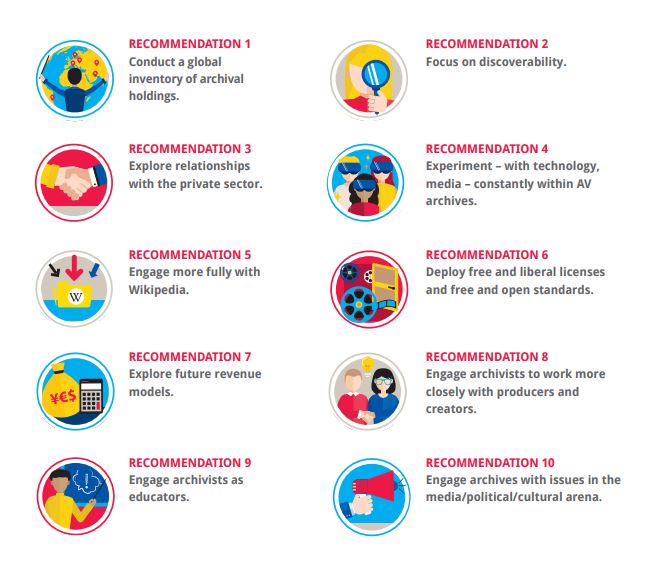Shaping the future of audiovisual archiving: New international think tank identifies strategic priorities
The Netherlands Institute for Sound and Vision has published a new White Paper ‘Towards a New Audiovisual Think Tank for Audiovisual Archivists and Cultural Heritage Professionals’. It identifies strategic priorities for audiovisual archiving in the coming decade and puts forward 10 concrete recommendations for collective action.

- Title:
- Theater 2
- Creator:
- Sebastiaan ter Burg
- Date:
- 2018
- Institution:
- Sound and Vision
- Country:
- The Netherlands
- Copyright:
- CC BY
Through its holdings of over a million hours of material, its expertise, and activities, Sound and Vision aims to strengthen an open and free society. It currently offers its holdings to the broadest variety of end-users, including journalists, students, researchers, heritage organisations, and the general public.
The newly published White Paper is one of the first steps that Sound and Vision has taken to establish a new international thought leadership group that aims to articulate international research for the audiovisual cultural heritage sector. It helps stakeholders active in the preservation of audiovisual heritage to identify their future priorities. It also aims to enable more long-term use of AV archiving for learning and education
The recommendations
Peter B. Kaufman, Towards a New Audiovisual Think Tank for Audiovisual Archivists and Cultural Heritage Professionals (Hilversum, NL: Netherlands Institute for Sound and Vision, 2018). page 15. CC BY.
The Paper puts forward ten recommendations as strategic priorities for the coming ten years, around which action, research and development, and resources will be organised. Each recommendation comes with a timeline of first collective actions to be taken. Here’s a headline summary of the questions the recommendations address:
-
Should there be a better way, for instance a unified catalogue, for the field to know itself, its holdings, and its power?
-
Should there be a guidebook of best practices written by the field for Google and other technologies to optimise audiovisual searchability and findability?
-
Should there be more concerted engagement with the giants of the field like Google, Facebook, and Amazon, commercial as they are?
-
What should be our own commitment to constant experimentation?
-
Should we launch a real effort to engage with Wikipedia?
-
Should it be put forward somewhere that the work of FIAT/IFTA and PrestoCentre and individual archives like Sound and Vision should always be centered on pushing information to be unfettered and free?
-
If digital content is increasingly harder to license, rent, and sell online, then advertising will become the primary means of generating revenue against archival moving image content in the future. How should we consider this advertising business – from a business perspective?
-
Should archivists liaise more fluidly with producers and creators?
-
How do we define our roles as educators today, especially as so many young people see and hear the world through moving images and sounds that we may one day be called upon to safekeep?
-
What role, if any, should archives play in the political/media/cultural arena?
What happens now?
The AV think tank is committed to following up on these recommendations through a series of activities and by creating dedicated task forces and working groups. These groups will conduct further research, set grounds for policy and practice recommendations through handbooks, strategy papers, and other publications; and develop action plans that connect directly to the interests of AV archivists and cultural heritage professionals.
Read the full White Paper
The White Paper can be found at the Sound and Vision website or downloaded directly as PDF. The AV Think Tank invites everyone to join the conversation about the shared strategic priorities, and follow up on the White Paper on Medium here.
You can also contact them by email at avthinktank@beeldengeluid.nl
Written by Peter B. Kaufman of Intelligent Television and MIT, the Paper is the result of months of open conversation with leading experts in the field representing various positions, archives, and cultural heritage institutions. It was publicly presented at the FIAT/IFTA 2017 World Conference in October in Mexico City, with many of the delegates contributing their thoughts.


